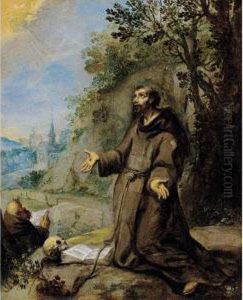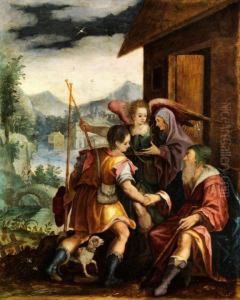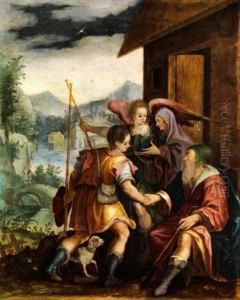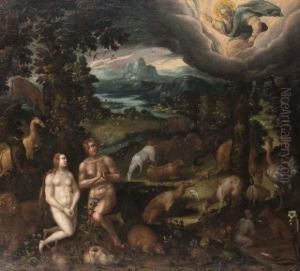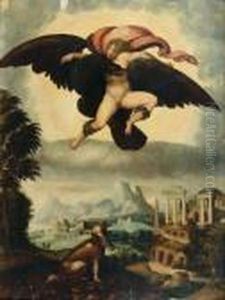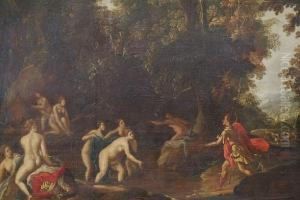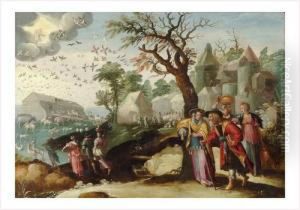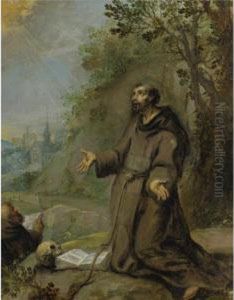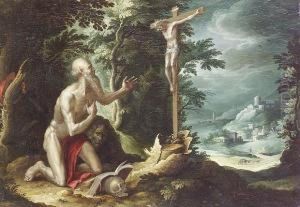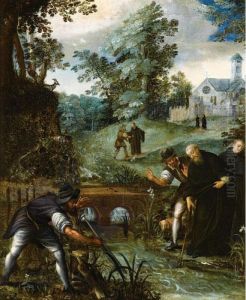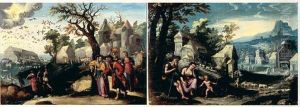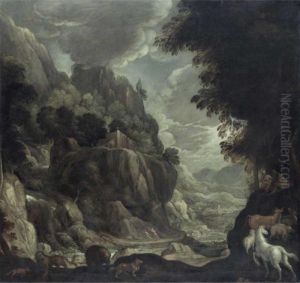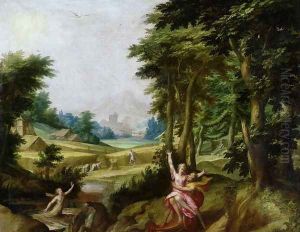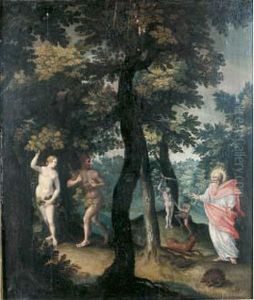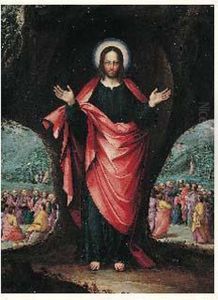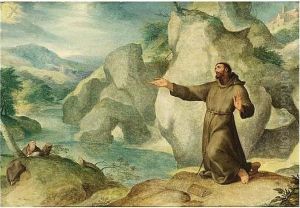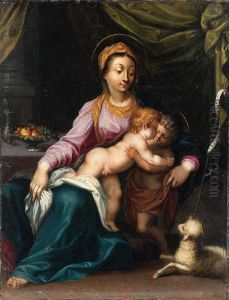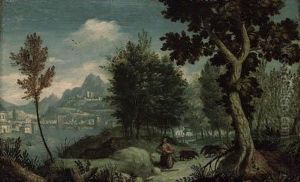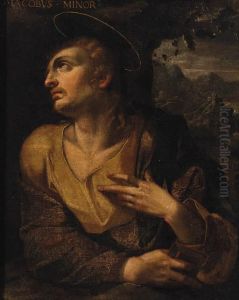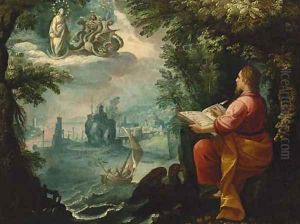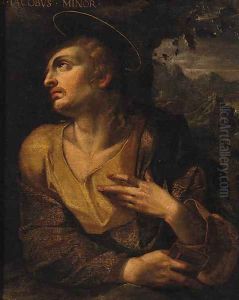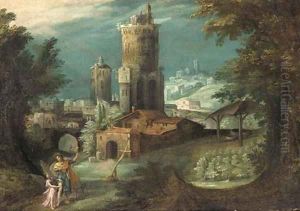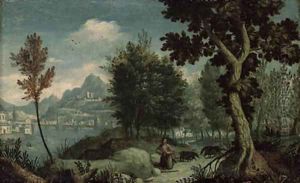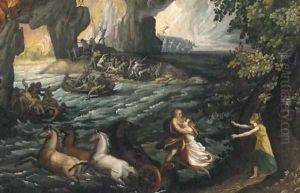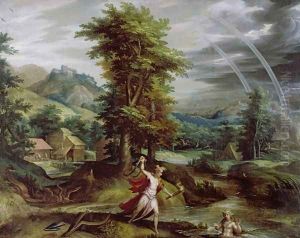Jan Soens Paintings
Jan Soens was a significant figure in the world of art during the late 16th and early 17th centuries. Born in 's-Hertogenbosch, Netherlands, in 1547, Soens embarked on a career that would see him become one of the notable painters of his time, despite the fact that today he may not be as widely recognized as some of his contemporaries. His work primarily bridged the Northern Renaissance and Mannerism, showcasing a transition in styles that was occurring across Europe during this period.
Soens is known to have traveled extensively, which was somewhat common for artists of his caliber during the Renaissance. This travel no doubt influenced his artistic style, exposing him to a variety of techniques and artistic sensibilities that were prevalent in different parts of Europe. Italy, with its rich artistic heritage and the ongoing Renaissance, was a significant influence on Soens. His time there, particularly in Rome, allowed him to study the works of great Italian masters, an experience that infused his own paintings with a blend of Northern European and Italian Renaissance characteristics.
Despite his travels and the influences he absorbed, Jan Soens was deeply connected to his Dutch roots. His works often reflected the themes and stylistic preferences that were part of the Dutch artistic tradition, including a meticulous attention to detail and a profound appreciation for nature. However, his exposure to the Mannerist style during his travels is also evident in his work, which sometimes displayed the elongated forms and exaggerated poses characteristic of that movement.
Soens' career was marked by his return to 's-Hertogenbosch, where he continued to paint and contribute to the local art scene until his death in 1611. While his works were respected in his time, and he was considered a master of his craft, the shifting tides of art history have left him less recognized than some of his peers. Nonetheless, for those who study him, Jan Soens represents an important link between the artistic traditions of the Netherlands and the broader European Renaissance, embodying the exchange of ideas and styles that was so crucial to the development of Western art.
